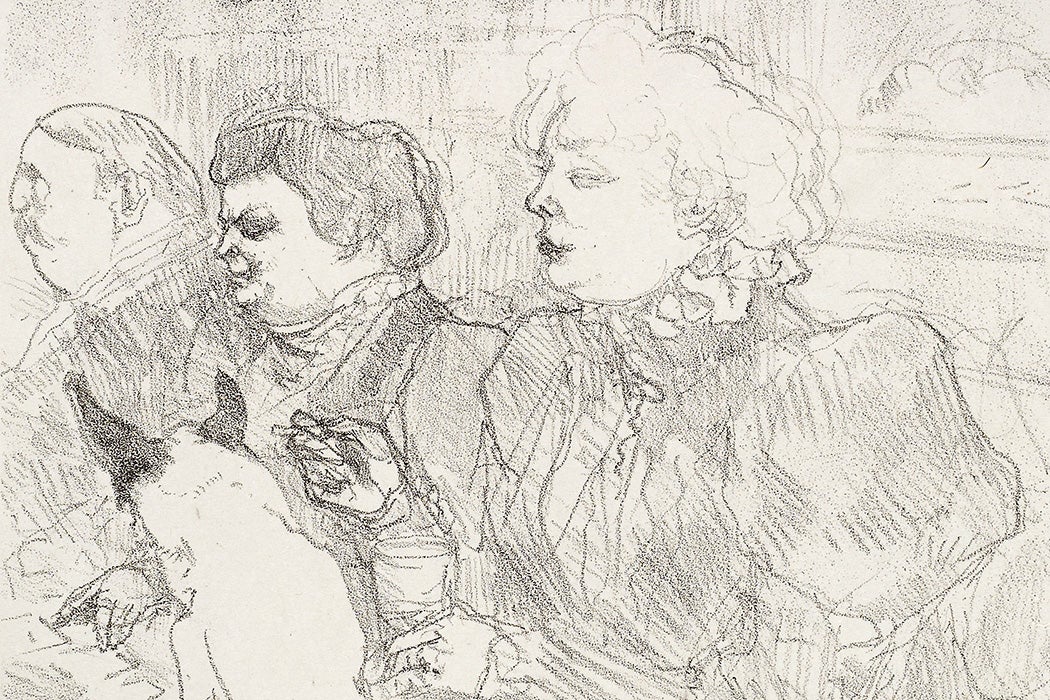Gay and lesbian bars in Paris during the belle époque (1871–1914) helped transform the neighborhood of Montmartre from “a bedroom town for boulevard prostitutes and bohemian artists into the mecca of modern commercialized mass culture known as ‘Gay Paree.’” Scholar Leslie Choquette examines how the owners of places like Palmyre’s Bar helped “in no small way to create and sustain a queer community.” They did this while “commercializing and commodifying it” at the same time—making such establishments key to the international appeal of Paris in the years before and after World War I.
“By encouraging voyeurism and slumming by tourists in order to maximize their profits,” writes Choquette, “they contributed as much as the cabaretiers and dance hall impresarios to the construction of Montmartre as the raunchy entertainment capital of the western World.”
Choquette explores the career of bar-owner Palmire Louise Dumont. Born in 1855 in northern France to working-class parents, Dumont worked in spinning mills until she was 22. Little is known about the next two decades of her life—some sources suggest she may have been involved in prostitution. In 1897, she became manager of La Souris, an established brasserie in Montmartre that catered to lesbians. By then, she was known simply as Palmyre.
Henri Toulouse-Lautrec made La Souris famous through his sketches and lithographs. He did the same for Palmyre. His 1897 lithograph At La Souris, Madame Palmyre, portrays the “gruff proprietress,” a couple of her cronies, and her beloved bulldog, Bouboule, sitting right up on a table.
Palmyre opened her eponymous bar in January 1909. The establishment was ideally located, right across the place Blanche from the (in)famous Moulin Rouge. Palmyre’s Bar was based on Maurice’s, a neighborhood gay bar, complete with doorman and use of the English “bar” in the name, but with much more of a lesbian vibe.
Palmyre worked to cultivate celebrities like Mathilde “Missy” de Morny, the lover of the writer Colette. Colette, in turn, helped publicize the bar, drawing in other authors who then proceeded to write about it. Actors and singers performed on the tiny stage, flâneurs arched their eyebrows, voyeurs gawked at something forbidden, and the cash flowed. It was a place of “visibility and celebration” of turn-of-the-century queer culture, of display and performance, both a neighborhood bar and a destination.
Choquette explains that the “queer bar owners had an easier time in France than elsewhere” because the French Revolution had decriminalized homosexuality. Male homosexuals were still prosecuted for public indecency and corruption of minors under the age of twenty-one. But if there was no public indecency, always a vague term, bars were allowed to continue in business. The police mostly ignored “lesbian behavior within the confines of bars and brothels.” Choquette also notes that it wasn’t out of the question that Palmyre paid off the local police captain.
In its brief life, Palmyre’s Bar became iconic. Writes Choquette, “Its very name now signified vice, whether for a student newspaper in faraway Montpellier, a ballet-pantomime at the National Academy of Music, or the latest plays at major theaters, including the Comédie-Française.”
Upon Palmyre’s death in 1915, her also-unmarried sister, who had supplied provisions to the bar’s kitchen from her farm, inherited half of the operation. But that same year, Montmartre’s entertainment establishments were shut down because of the war. Palmyre’s final business partner, Georges Giguet, alias Bobette, would ultimately open a new bar, the Liberty, in the space in 1923.
Weekly Newsletter
Palmyre’s “business formula of providing sexualized gay entertainment to beautiful people and straight voyeurs” became the template for Montmartre nightlife. Modernity’s “commodification of delinquent pleasures” helped sustain a “queer community while commercializing and commodifying it.”
And Paris’s reputation as a world cultural capital—of Modern art, sexual liberty, and racial freedom—made it the refuge of many an American, from Lost Generation expat to Black American in exile. How, asked the popular American song of 1919, “ya gonna keep ’em down on the farm after they’ve seen Paree?” Especially when they’ve not only seen “Paree,” but danced at the lesbian bar on the place Blanche?
Support JSTOR Daily! Join our new membership program on Patreon today.







